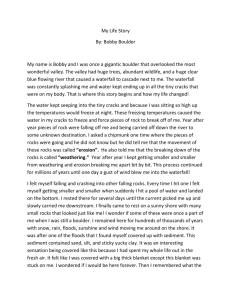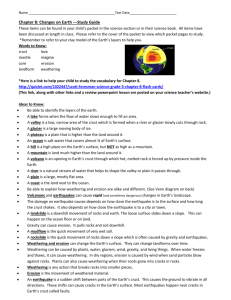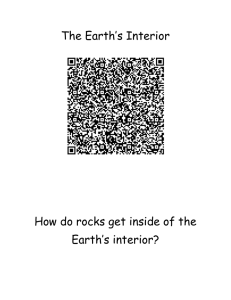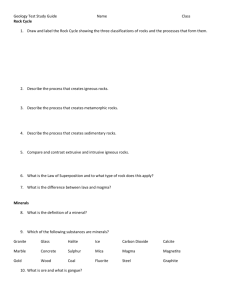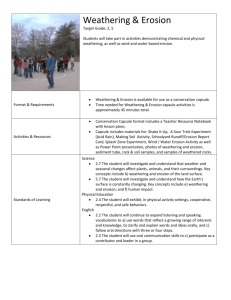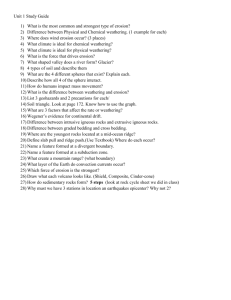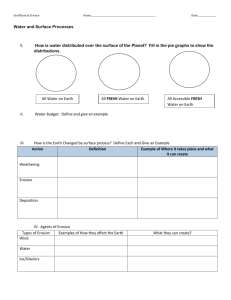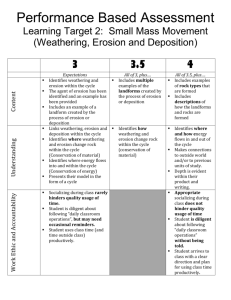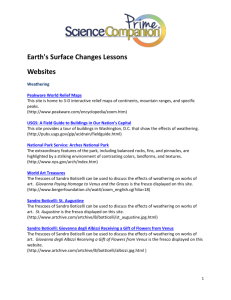4th Grade Science Knowledge Map Scientific Inquiry and
advertisement
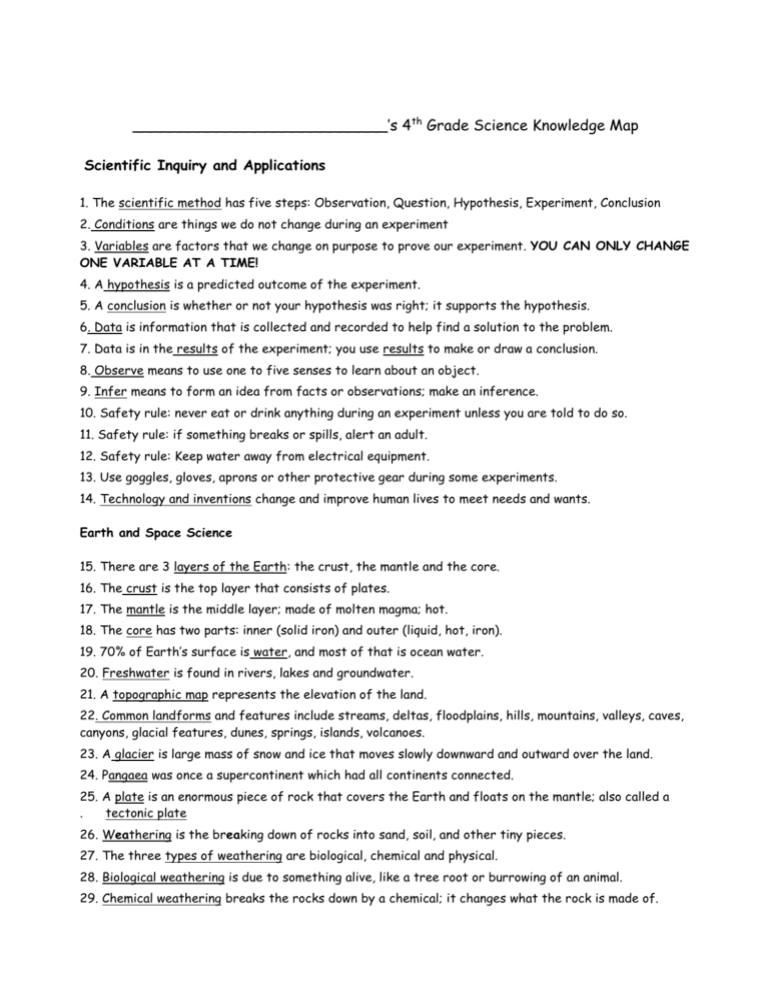
___________________________’s 4th Grade Science Knowledge Map Scientific Inquiry and Applications 1. The scientific method has five steps: Observation, Question, Hypothesis, Experiment, Conclusion 2. Conditions are things we do not change during an experiment 3. Variables are factors that we change on purpose to prove our experiment. YOU CAN ONLY CHANGE ONE VARIABLE AT A TIME! 4. A hypothesis is a predicted outcome of the experiment. 5. A conclusion is whether or not your hypothesis was right; it supports the hypothesis. 6. Data is information that is collected and recorded to help find a solution to the problem. 7. Data is in the results of the experiment; you use results to make or draw a conclusion. 8. Observe means to use one to five senses to learn about an object. 9. Infer means to form an idea from facts or observations; make an inference. 10. Safety rule: never eat or drink anything during an experiment unless you are told to do so. 11. Safety rule: if something breaks or spills, alert an adult. 12. Safety rule: Keep water away from electrical equipment. 13. Use goggles, gloves, aprons or other protective gear during some experiments. 14. Technology and inventions change and improve human lives to meet needs and wants. Earth and Space Science 15. There are 3 layers of the Earth: the crust, the mantle and the core. 16. The crust is the top layer that consists of plates. 17. The mantle is the middle layer; made of molten magma; hot. 18. The core has two parts: inner (solid iron) and outer (liquid, hot, iron). 19. 70% of Earth’s surface is water, and most of that is ocean water. 20. Freshwater is found in rivers, lakes and groundwater. 21. A topographic map represents the elevation of the land. 22. Common landforms and features include streams, deltas, floodplains, hills, mountains, valleys, caves, canyons, glacial features, dunes, springs, islands, volcanoes. 23. A glacier is large mass of snow and ice that moves slowly downward and outward over the land. 24. Pangaea was once a supercontinent which had all continents connected. 25. A plate is an enormous piece of rock that covers the Earth and floats on the mantle; also called a . tectonic plate 26. Weathering is the breaking down of rocks into sand, soil, and other tiny pieces. 27. The three types of weathering are biological, chemical and physical. 28. Biological weathering is due to something alive, like a tree root or burrowing of an animal. 29. Chemical weathering breaks the rocks down by a chemical; it changes what the rock is made of. 30. Physical or Mechanical Weathering is the breakdown of rocks and soil by wind, water, ice and pressure. 31. Erosion is carrying away, or moving of the weathered rock from one place to another. 32. Erosion can be helpful or harmful to the environment. 33. Erosion can be caused by wind, water, ice or gravity. 34. Deposition is when the weathered material is carried away (erosion) and deposited or placed somewhere else. 35. SLOW changes on the Earth’s surface can change due to Weathering, Erosion, Deposition of rock, soil and sediment 36. Catastrophic events such as flooding, volcanoes and earthquakes create new landforms. 37. Rocks change shape due to freezing and thawing, wind, plant growth, gases in the air, pollution, gravity, and catastrophic events 38. Gravity plays an important role in understanding erosion, especially in mass wasting (mudslides, landslides, and avalanches) or flooding. 39. EROSION is a destructive process, and DEPOSITION is a constructive one. 40. A plant’s roots can cause damage by weathering, yet prevent erosion by holding soil in its place. 41. A volcano is a mountain formed by lava and ash 42. An earthquake is caused by sudden movement along the fault line between two plates 43. The Richter Scale is a scale that measures how powerful an earthquake is: 1 is weak and 10 is very strong. 44. A seismograph is an instrument scientists use to measure the strength of an earthquake. 45. A fault line or fault is the place where two plates meet. 46. Magma is hot liquid in the ground. 47. Lava is hot liquid above the ground 48.. A tsunami is a fast moving ocean wave that is caused by an underwater volcano or earthquake 49. A scientist who studies the Earth and properties of rocks is a geologist. Life Science 50. An organism is a living thing. 51. Abiotic means NOT LIVING. 52. Biotic means LIVING. 53. Ecosystems are based on relationships between abiotic and biotic factors. 54. Ecosystems can change rapidly (Volcanoes, Earthquakes, Fire) or slowly (Climate change, erosion). 55. Plants and animals interact when plants take in carbon dioxide and release oxygen, and animals take in oxygen and release carbon dioxide. 56. A fossil is any evidence that an organism lived in the past, or of conditions that existed in the past. 57. Fossil records provide evidence for changes in populations and species; our living history. 58. The two types of fossils are: trace and body (mold, cast, true form). 59. A trace fossil shows the behavior of an animal or plant (tail marks, burrows, waste). 60. A body fossil includes any part of the plant or animal (bones, teeth), and can be called mold, cast or true form. 61. A Mold (the indentation) or Cast (the filling in of the mold) fossil is when the physical characteristic or organisms are impressed onto rocks (petrified wood, shells). True form is the actual body part. 62. Certain types of fossils provide evidence about the environment at that time (temperature, water cover, air quality, pressure). Physical Science 63. Matter is anything that has mass and takes up space. 64. Physical properties are characteristics of a substance, such as color, hardness, taste, size, mass, weight, volume, density. 65. Mass is a property that describes the amount of matter in an object. 66. Volume is a property that describes the amount of space an object takes up. 67. Matter has 3 states: solid, liquid and gas. 68. The customary, or standard system is used in the United States, but not many other countries (mile, pound, yard). 69. The metric system is used in most countries all over the world; in the science and medicine field always. 70. The metric system is based on three BASES: Liter, Meter and Gram. 71. A LITER is used for liquids, such as a 2-Liter bottle of pop. 72. A METER is used to measure distance or length; as long as a baseball bat. 73. A GRAM is used to measure weight/mass; as much as a paper clip. 74. The metric system in order of largest to smallest prefixes: Kilo (1,000 of base, Hecto (100 of base) and Deka (10 of base), the (Base), deci(.1 of base), centi (.01 of base), milli (.001 of base). 75. Parts of an object may be assembled in different shapes, but the mass remains the same. 76. The sum of all parts in an object equals the mass of an object. 77. When a solid is dissolved in a liquid, the mass is equal to both individually. 78. When water is placed in an open container, its volume decreases because of evaporation. 79. Addition of heat may increase the temperature of an object. Removal of heat may decrease the temperature of an object. 80. Electrical conductors are materials in which heat can flow easily. 81. Examples of conductors are water, glass, metal, YOU! 82. Electrical insulators are materials that electricity cannot flow easily. 83. Examples of insulators are rubber, plastic, foam. 84. In order for electricity to flow through a circuit, there must be a complete loop through which the electricity can pass through. 85. An electrical system consists of components, such as a light bulb, a fan, a battery, wires, etc. 86. When an electrical device is part of a complete loop, the electrical energy can be turned to light, sound, heat or magnetic energy. 87. Electrical circuits can be open (not flowing) or closed (flowing electricity). 88. Magnets are materials that are generally attracted to iron (and steel is made of iron), cobalt and nickel. 89. A magnet can be permanent (always a magnet) or temporary (not always a magnet). 90. Attract means to pull toward. 91. Repel means to push away. 92. Force is a push or a pull. 93. Magnets have a North and a South Pole. 94. Opposite poles attract, and “like” poles repel. 95. The Earth is a magnet, with a north and a south pole. 96. All magnets have a magnetic field, which is the area surrounding the magnet that will attract. 97. ___________________________________ 98. ___________________________________ 99. ___________________________________ 100. _________________________ ________________’s Knowledge Map Results Date

